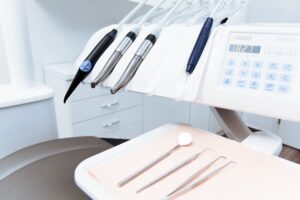Steps for proper tooth brushing
Proper brushing is important to prevent dental diseases such as tooth decay and periodontal disease. Here are some basic steps and tips for effective dental care.
Preparation:
- Use a soft to medium-hard toothbrush.
- Choose a toothpaste that contains fluoride.
- Use dental floss or interdental brushes to clean between your teeth before you start brushing.
Technology:
- Hold the toothbrush at a 45-degree angle to the gums.
- Brush the outside and inside surfaces of your teeth using small, circular movements.
- Brush the chewing surfaces with short, back-and-forth movements.
Avoid pressing too hard to avoid injuring your gums.
Sequence:
- Start with the outside surfaces of the upper and lower teeth.
- Then clean the inside surfaces of the upper and lower teeth.
Then brush the chewing surfaces. - Don't forget to clean your tongue too to reduce bacteria and bad breath.
Duration:
- Brush your teeth for at least two minutes.
- Use a timer or an electric toothbrush with a built-in timer to ensure you meet the recommended brushing time.
After cleaning:
- Rinse the toothbrush thoroughly under running water and let it air dry.
- Change your toothbrush every three months or sooner if the bristles are worn.
Additional tips
Dental floss and interdental brushes: Clean between your teeth once a day to remove plaque and food debris.
Mouthwash: Use an antibacterial mouthwash for extra freshness and to fight bacteria.
Regular dental visits: Go for a dental check-up and professional teeth cleaning at least once a year.
Nutrition: Reduce consumption of sugary foods and drinks that can cause tooth decay.
Brushing your teeth thoroughly should be done at least twice a day, ideally after meals. In addition to the correct brushing technique, cleaning between your teeth and your tongue is also important. Regular visits to the dentist and a diet that is healthy for your teeth also contribute to oral health.
Current information on other topics

Finally being able to laugh and eat carefree?
Do you also wish you could finally laugh and eat without worrying that your teeth are not perfectly aligned or that you may have gaps? No problem.

Toothache – why, how, what makes it hurt?
Toothache is usually caused by tooth decay. The bacteria have already made their way into the inside of the tooth and are attacking the root. How does the pain occur?

Beautiful, white teeth and a higher self-confidence
Beautiful, white teeth contribute to a higher self-confidence and a more beautiful appearance. If a person has radiant, well-groomed and straight teeth, they have a completely different effect on others.
